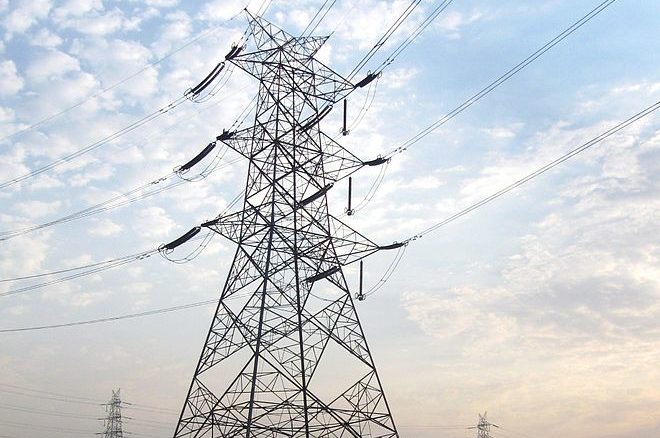Smart Power India, an arm of US-based impact investor The Rockefeller Foundation, today released the findings of its joint study with government thinktank NITI Aayog on the state of electricity access and benchmarking of distribution utilities in India.
The study was conducted across ten states with a sample size of over 25,000 respondents from different consumer categories such as households, agriculture, commercial enterprises, and institutions both from rural and urban areas.
The study, which comes almost two years after India achieved 100% household electrification, indicates that access to reliable electricity supply remains a major challenge even today.
At the study launch, Jaideep Mukherji, CEO, Smart Power India said, “India in recent years has emerged as one of the leaders in providing access to electricity to its citizens, almost doubling the access rate in the past 20 years from 59.4% to extending grid connections to 100% households in the country. This has been made possible through a multitude of efforts, including enhancing power generation to reduce supply deficits, strengthening the backbone of the electricity supply infrastructure, and ensuring last-mile connectivity for different customer segments.
“However, despite achieving 100% household electrification, access to reliable and affordable electricity supply continues to remain a major challenge even today. It is now time to focus on the sustainability of electricity access and craft an action plan to resolve the barriers.”
Findings
The study brings out significant findings on grid connectivity, electricity access, customer satisfaction, and state of utility’s capacity to deliver.
Nearly 92% of the respondents reported the availability of electricity infrastructure within 50 meters of their premises. However, the hook-up rate suggests that, even where electricity infrastructure is available, not all customers have a grid connection. The hook-up rate for agricultural and institutional consumers is particularly low, at 70% and 81%, respectively. But households enjoy higher access at 96%, partly because of the Saubhagya scheme’s interventions.
Overall, 87% of the survey respondents reported access to grid-based electricity. The remaining 13% either used non-grid sources for electricity and lighting or did not use any electricity at all.
Further, of all customers using non-grid sources, the majority 62% are agricultural customers. Only 4% of households today do not have access to grid-based electricity.
A total of 66% of surveyed customers are satisfied with the overall services from their utility. However, satisfaction levels differed between urban customers (75%) and rural customers (63%). Major customer satisfaction drivers include power reliability, power quality, the billing and collection process, and service provided by utility staff (staff behavior).
Infrastructural capacity and, operational and institutional efficiency are key factors that determine distribution utilities’ capacity to deliver electricity access sustainably. Gujarat’s utilities lead in the capacity to deliver, with all four receiving the top four ranks among the surveyed utilities and delivering performance on all three capacity categories.
Suggestions
The study found that utilities performing better on access also did better on keeping customers satisfied. The quality of power also played an important part in customer satisfaction, as satisfied customers in this study reported fewer voltage fluctuations. The number of power cuts has a stronger correlation with customer satisfaction than prior notification of power cuts, but both are significant.
Ashvin Dayal, senior vice president-Power, Rockefeller Foundation, USA, observed, “India’s success in enabling electricity connections to millions of unelectrified populations underlines its strong commitment to achieving energy security for all. As India moves the spotlight on ensuring reliable and affordable electricity supply, it is a good time to map, assess, and benchmark its electricity distribution utilities’ capacity and help them enhance their overall performance to serve a billion people’s growing energy needs. The next phase of growth in the power sector should be led by supportive domestic regulatory and policy reforms for ensuring increased self-reliance and organizational efficiency.”
The study suggests that as the power sector seeks to achieve greater self-reliance and sound financial health, delivery effectiveness and customer satisfaction will play a crucial role in strengthening the sector’s overall performance.
Besides, focus on areas such as quicker electricity connections, customer awareness and use of electricity subsidies, affordable tariffs structure for customers, increased customer engagement, and enhanced operational efficiencies both at organizational and supply level will help the sector achieve its full potential and create a transformational impact on millions of customers.
This content is protected by copyright and may not be reused. If you want to cooperate with us and would like to reuse some of our content, please contact: editors@pv-magazine.com.









By submitting this form you agree to pv magazine using your data for the purposes of publishing your comment.
Your personal data will only be disclosed or otherwise transmitted to third parties for the purposes of spam filtering or if this is necessary for technical maintenance of the website. Any other transfer to third parties will not take place unless this is justified on the basis of applicable data protection regulations or if pv magazine is legally obliged to do so.
You may revoke this consent at any time with effect for the future, in which case your personal data will be deleted immediately. Otherwise, your data will be deleted if pv magazine has processed your request or the purpose of data storage is fulfilled.
Further information on data privacy can be found in our Data Protection Policy.